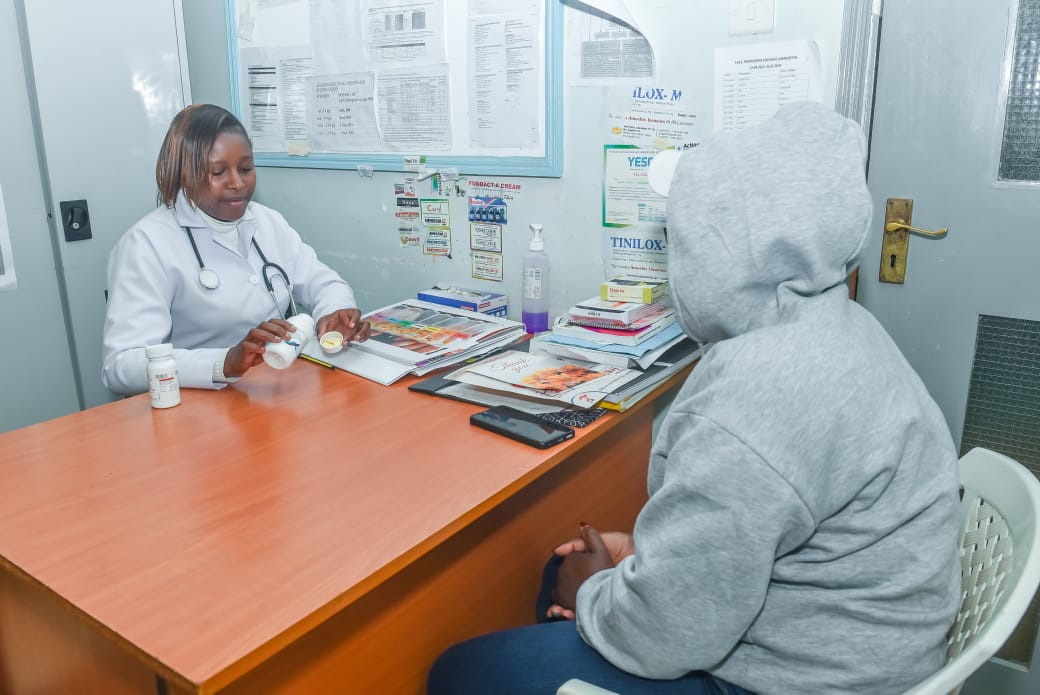Kirinyaga County Governor Anne Waiguru has said that the county is fast advancing towards the elimination of new HIV infections.
This comes in the wake of the county being recognized for offering sustained quality HIV/Aids management services as the country transitions to the direct funding model for HIV programmes.
Speaking during a media interview, the Governor said that the county has been implementing a comprehensive HIV/AIDS strategy aimed at lowering prevalence rates through prevention of new infections, prevention of mother to child transmission as well as enhancing treatment.
She noted that over the recent years, the county’s prevalence rate has dropped from 3.8pc in 2018 to the current 2.4pc while new infections have gone down from 179 to 118 currently. Mother to child transmission has also decreased from 12.4pc in 2018 to 5.8pc in 2024.
Governor Waiguru expressed optimism on achievement of improved outcomes and projected less than 1pc prevalence rate in the near future and eventual elimination of the pandemic in the county.
During the recent HIV Service Delivery Integration Summit held in Mombasa, Kirinyaga was saluted by the National AIDS and STI’s Control Programme (NASCOP) and Center for Disease Control and Prevention (CDC) as one of the devolved units that have successfully implemented Government to Government (G2G) HIV/AIDS management collaboration.
Waiguru who is also the Council of Governors Chair, said that through G2G HIV/AIDS programming, County Governments are able to lead technical, management and financial systems for HIV programs and sustain quality HIV service.
The new G2G funding model mean that Counties will be getting direct funding for HIV/Aid management from donors instead of the resources going to external implementing partners to implement the programmes.
She emphasized the transformative impact of the G2G funding. “We are very appreciative of the government-to-government funding for this program in Kirinyaga County since it has enabled us realize significance outcomes from the interventions we have been implementing. This model has filled many gaps that existed when donors used external implementing partners.” Said the governor, noting that direct funding has also provided opportunities to improve the locally owned and driven coordination and management of HIV programs.
Waiguru pointed out that the county government has also been undertaking capacity building within the county’s healthcare system preparing the health practitioners to offer quality HIV/AIDS service in the county as well as integrating it in healthcare system. She expressed optimism that in future, counties should be able to finance HIV/AIDS programs so as to reduce overdependence on external donors.
Kirinyaga County Executive Committee Member (CECM) for Medical Services, Public Health and Sanitation, George Karoki, said that through Center for Disease Control and Prevention (CDC) and the President’s Emergency Plan for AIDS Relief (PEPFAR) as well as other implementing partners, the county has made significant strides towards HIV/Aids management ranging from testing, prevention and treatment.
Karoki noted the importance of the government-to-government funding model in enhancing local capacity. “A lot of capacity building has been done. Our healthcare workers have been trained on how to manage, plan, and implement issues related to HIV prevention. They are now able to own that particular activity and management as a community,” he stated.
He highlighted the integration of HIV services into normal service delivery as a significant advancement, particularly in outpatient and laboratory services.
The CECM noted that Kirinyaga County has introduced Wezesha Afia project, an initiative to manage government-to-government funding and oversee seamless transition from donor funded activities to the eventual county funded HIV/Aids programming.
Lydia Wairimu, a Peer Educator at Difathas Health Center, shared her personal journey and the impact of the G2G program on the ground.
“I found out my diagnosis in 1994. Then HIV medication was scarce and expensive. I was employed here in 2011, and my duties include ensuring patients actively take medication, and that those who are diagnosed are taken through counselling and enrollment into treatment plan.” Said Wairimu.
She said that due to various interventions by the government and partners, there has been reducing mother to child infection. Stigma has also reduced thus increasing the county’s HIV suppression rate and reducing HIV related deaths.
Mary Wawira, a Mentor Mother at Kangu Health Center, emphasized the program’s role in supporting expectant mothers. “I have been a Mentor Mother for about four years. My duties entail educating and advising expectant mothers on the importance of getting tested as a couple, as well as providing guidance and counselling for those who may turn out HIV positive.” She said. She also counsels those who test positive on how to protect their unborn babies from contracting the virus and how to manage them after birth.
Kirinyaga County is a considered a medium HIV burdened county with 13,353 persons living with HIV, 457 of them being children and 94pc of them accessing treatment. The current suppression rate stands at 91pc.





